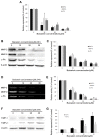Baicalein inhibits the invasion and metastatic capabilities of hepatocellular carcinoma cells via down-regulation of the ERK pathway
- PMID: 24039823
- PMCID: PMC3765161
- DOI: 10.1371/journal.pone.0072927
Baicalein inhibits the invasion and metastatic capabilities of hepatocellular carcinoma cells via down-regulation of the ERK pathway
Abstract
Baicalein, a widely used Chinese herbal medicine, has historically been used in anti-inflammatory and anti-cancer therapies. However, the anti-metastatic effect and molecular mechanism(s) of baicalein on hepatocellular carcinoma (HCC) remain poorly understood. Therefore, the purpose of this study was to assess the anti-metastatic effects of baicalein and related mechanism(s) on HCC. Based on assays utilized in both HCC cell lines and in an animal model, we found that baicalein inhibited tumor cell metastasis in vivo and in vitro. Furthermore, after treatment with baicalein for 24 hours, there was a decrease in the levels of matrix metalloproteinase-2 (MMP-2), MMP-9 and urokinase-type plasminogen activator (u-PA) expression as well as proteinase activity in hepatocellular carcinoma MHCC97H cells. Meanwhile, the expression of tissue inhibitor of metalloproteinase-1 (TIMP-1) and TIMP-2 were increased in a dose-dependent fashion. Moreover, baicalein treatment dramatically decreased the levels of the phosphorylated forms of MEK1 and ERK1/2. MEK1 overexpression partially blocked the anti-metastatic effects of baicalein. Combined treatment with an ERK inhibitor (U0126) and baicalein resulted in a synergistic reduction in MMP-2, MMP-9 and u-PA expression and an increase in TIMP-1 and TIMP-2 expression; the invasive capabilities of MHCC97H cells were also inhibited. In conclusion, baicalein inhibits tumor cell invasion and metastasis by reducing cell motility and migration via the suppression of the ERK pathway, suggesting that baicalein is a potential therapeutic agent for HCC.
Conflict of interest statement
Figures







References
-
- Parkin DM, Bray F, Ferlay J, Pisani P (2005) Global cancer statistics, 2002. CA Cancer J Clin 55: 74-108. doi:10.3322/canjclin.55.2.74. PubMed: 15761078. - DOI - PubMed
-
- Llovet JM, Bisceglie Di AM, Bruix J, Kramer BS, Lencioni R et al. (2008) Design and endpoints of clinical trials in hepatocellular carcinoma. J Natl Cancer Inst 100: 698-711. doi:10.1093/jnci/djn134. PubMed: 18477802. - DOI - PubMed
-
- Bruix J, Sherman M (2011) Management of hepatocellular carcinoma: an update. Hepatology 53: 1020-1022. doi:10.1002/hep.24199. PubMed: 21374666. - DOI - PMC - PubMed
-
- Tang ZY (2005) Hepatocellular carcinoma surgery--review of the past and prospects for the 21st century. J Surg Oncol 91: 95-96. doi:10.1002/jso.20291. PubMed: 16028278. - DOI - PubMed
-
- Gialeli C, Theocharis AD, Karamanos NK (2011) Roles of matrix metalloproteinases in cancer progression and their pharmacological targeting. FEBS J 278: 16-27. doi:10.1111/j.1742-4658.2010.07919.x. PubMed: 21087457. - DOI - PubMed
Publication types
MeSH terms
Substances
LinkOut - more resources
Full Text Sources
Other Literature Sources
Medical
Research Materials
Miscellaneous

